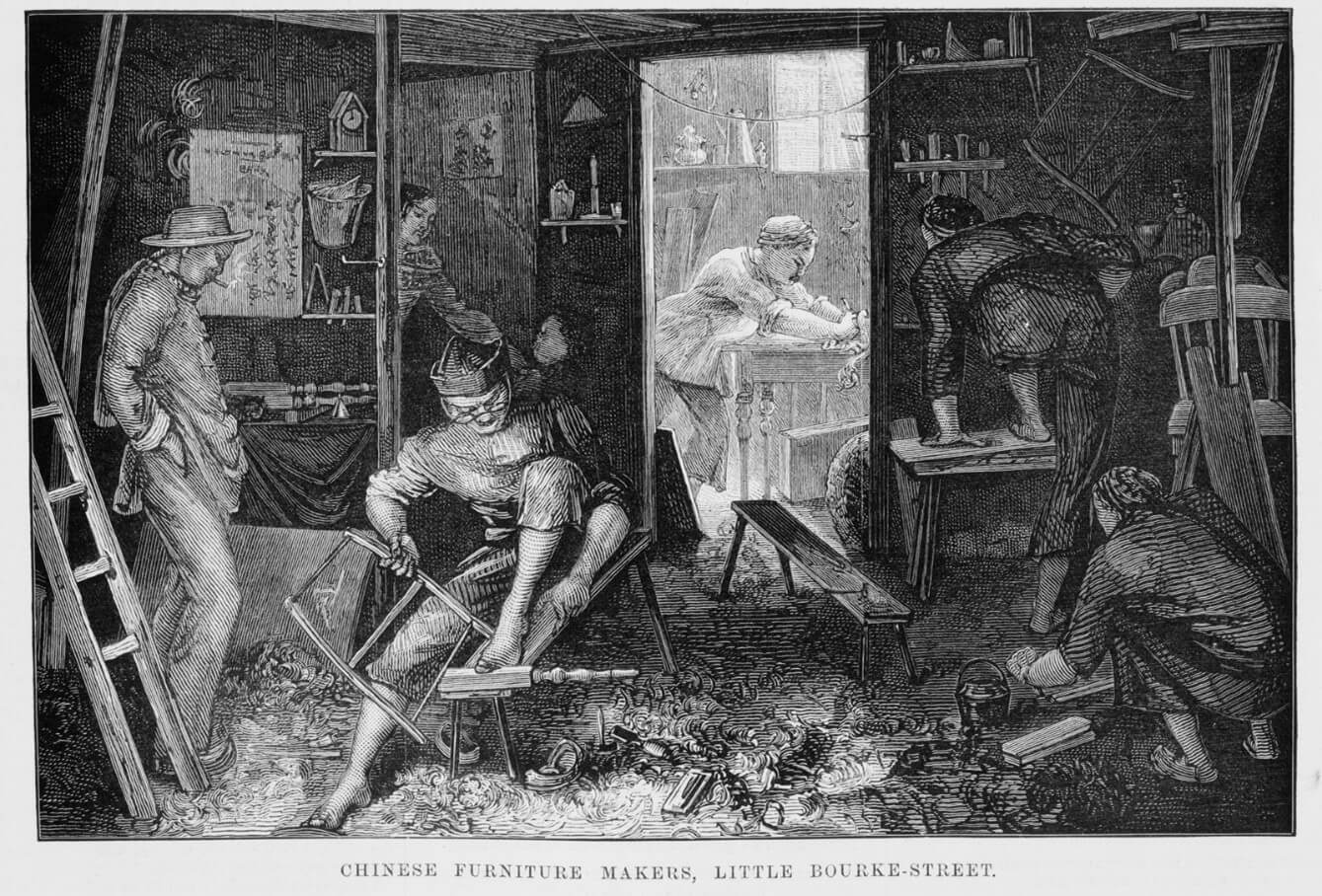Another group of workers then attracted the attention of legislators — Chinese workers in the furniture trade. Anti-Chinese sentiment was widespread in Victoria throughout the nineteenth century. It reached one peak during the gold rushes and surfaced again during the 1860s, late 1870s and 1880s. From the 1890s groups like the Australian Natives Association championed the cause of a ‘White Australia’ and pursued policies of exclusion against those Chinese residents who remained in the country. They were supported by the trade union movement, anxious to protect the jobs of ‘white men’ from what they saw as competition from cheap foreign labour, and by more specific industry groups like the United Furniture Trade Society, that aimed to exclude Chinese cabinet makers from the industry. The workers employed in Chinese furniture workshops in Little Bourke Street were identified as a particular threat to the livelihood of white workers in the furniture industry and in 1899 the anti-sweating provisions of the Factories and Shops Act were extended to the furniture trade. The Act required all furniture to be stamped ‘European labour only’ to indicate that it had not been made by Chinese cabinet makers.
Chinese Furniture Makers, Little Bourke-Street, 1880
Reproduced courtesy State Library Victoria
This wood engraving was published in the Australasian Sketcher, 24 April 1880.

